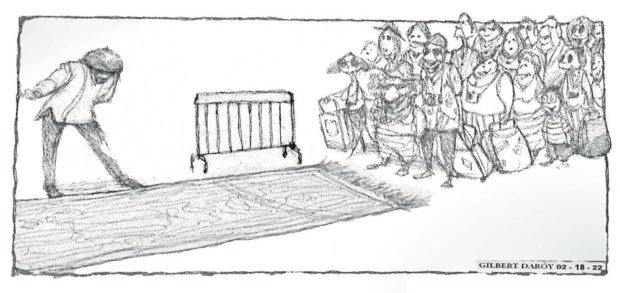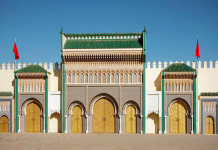After almost two years of travel restrictions, the Philippines finally reopened its doors last Feb. 10 to international tourists. More than 7,000 visitors have since arrived from countries like the United States, Australia, China, and Japan as of last week—a mix of returning tourists, balikbayans, and revenge travelers.
Tourism Secretary Bernadette Romulo Puyat said stakeholders in the tourism industry were ecstatic over the government’s decision to reopen the country’s international borders to fully vaccinated tourists. The re-opening is expected to boost the tourism sector which took a beating when the government imposed severe lockdowns in 2020.
In 2019, before the pandemic, the country welcomed 8.26 million visitors but numbers fell by as much as 82 percent in 2020 to 1.48 million (2021 figures are expected to be released in June). This severely impacted the industry: tourism’s share to the gross domestic product fell to 5.4 percent in 2020 from 12.8 percent in 2019; the average share over the past five years has been at 10.5 percent. In the process, about 1.1 million tourism-related jobs were lost. Given this low base, economists are predicting a strong rebound for the sector as the world begins to open up again.
Tourism workers, many of them idle during the lockdowns and therefore no income, welcomed the news. In Intramuros, Manila, a kutsero was preparing the few horses he had left, while a tourist boat worker in Loboc River, Bohol, was hopeful that, finally, they wouldn’t have to operate at a loss. Officials believe that bringing back international tourists would have a multiplier effect on other industries such as agriculture and fisheries as demand for their products will increase. “Masaya sila na finally bukas na, ibig sabihin, everything is going back to normal,” Puyat said.
But should things really return to pre-pandemic normal?
The study, “Bootstrapping tourism post-COVID-19: A systems thinking approach” published in September 2021, said the tourism industry should use the pandemic as an opportunity to “reinvent and rectify” old models and move toward sustainable tourism. To do this it proposed a three-fold strategy: 1) less emphasis on destination and more on the value chain by tapping into the resources of local communities (accommodation, attractions, transport, food and beverage, souvenirs, etc.) to offer a unique travel experience to tourists; 2) customize services and split to smaller tour groups to help lessen community and environmental disturbances; and 3) focus on quality over quantity, or smaller segments instead of mass-based travel.
Mass tourism, while it gave more jobs and boosted related businesses, also undoubtedly brought headaches such as traffic, overcrowding, garbage, destruction of cultural spots and natural habitats, and with little benefit to local communities that had to bear the brunt of higher real estate prices and more expensive cost of living. Philippine destinations have not been spared from these problems, a few examples: rapid development in Boracay has disturbed the habitat of endangered species such as flying foxes and fruit bats on the island; and garbage in Baguio City, the country’s summer capital, has continued to mount even during the pandemic. In addition, Supertyphoon “Odette” devastated top tourist destinations Siargao, Cebu, and Palawan last December, affecting the planned reopening of resorts and other establishments. To address these numerous problems, conservationists have appealed for the protection of the remaining beach forests in Boracay, while Baguio City is mulling the imposition of a garbage tax on tourists. As for Odette-devastated areas, the government has extended low interest and collateral-free loans to affected businesses to help them rebuild and reopen.
Rebuilding, however, is not enough if it means merely propping up the old system instead of reinventing it to adapt to the new normal. At least the Department of Tourism, under Puyat’s helm, appears to be on the right track. Over the past two years, it focused on strengthening domestic travel by developing tourism circuits such as outdoor/open spaces (bike lanes, farms, wellness), and nature destinations with emphasis on high-quality experiences to cater to new-normal travelers. The department poured resources into its COVID-19 tourism response and recovery plan: crafting health protocols from scratch, trying to keep the industry afloat by helping workers and business owners, and laying the groundwork for what lies ahead post-pandemic including concerns about the environment and the sector’s recovery. Sustainability, Puyat said, remains key.
Her challenge to the next tourism secretary: “Adopt it or make it better.”
RELATED OPINION
Global tourism needs a shot in the arm


Read Next
Don’t miss out on the latest news and information. 
Subscribe to INQUIRER PLUS to get access to The Philippine Daily Inquirer & other 70+ titles, share up to 5 gadgets, listen to the news, download as early as 4am & share articles on social media. Call 896 6000.














